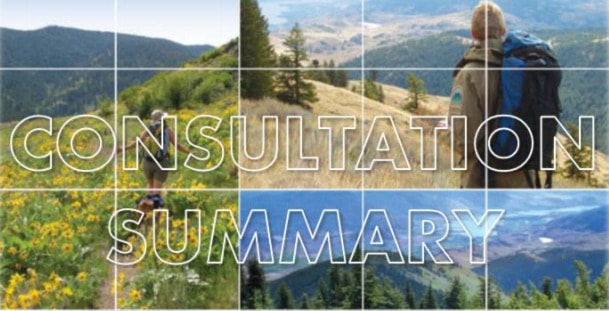Six months after the comments period closed, the B.C. Ministry of Environment has released a summary of feedback on the proposed Protected Areas Framework for the South Okanagan.
In August 2015, the province released an intentions paper and invited public feedback regarding protection options for three distinct areas in the South Okanagan-Similkameen. The province is proposing a large area, west of Osoyoos and south of Highway 3 to the U.S., be considered by Parks Canada for inclusion in a South Okanagan National Park Reserve.
Likewise, part of the White Lake basin and extending down past Willowbrook, west of Hwy. 97, is also being put forward for national park status. Between them, the two cover several protected areas, including the White Lake Grasslands, Spotted Lake, the Osoyoos Desert Centre and the South Okanagan Grasslands Protected Area sites of East and West Chopaka.
A third area, covering an area west of Oliver towards Cawston, and north of Highway 3 to the southern border of the White Lake Grasslands, is being recommended as a conservancy under the B.C. Park Act.
During the 81-day public comment period, which ended Oct. 31, 2015, 3,460 responses were received.
“The feedback shows the public is very interested and passionate about issues of environmental protection, First Nations cultural values, tourism and recreation opportunities in the South Okanagan,” the ministry said in a release.
Themes identified throughout the submissions included the need to ensure connectivity between areas, to preserve and protect the remaining biodiversity of the South Okanagan, and to recognise the importance of hunting, fishing, tourism, ranching and recreation in the area.
“Our intent with the final recommendations is to protect significant geographic and cultural values, while providing recreation and tourism opportunities for future generations to enjoy," said Minister of Environment Mary Polak.
According to the full report, which is online at http://www.env.gov.bc.ca/bcparks/planning/pdfs/consultation-summary-so-ip.pdf, the majority of responses did not come through their official online questionnaire and often providing the respondent’s views on a range of topics related to the proposed protection framework, rather than responding to the specific questions posed.
Many of the outside responses came through the Wilderness Committee (707) and the Canadian Parks and Wilderness Committee (2138), who both hosted websites enabling people to submit comments on the proposal.
We are really happy the report has finally been released, and we look forward to the BC government sitting down with the federal government and First Nations governments to move this process forward again,” said Gwen Barlee, national policy director with the Wilderness Committee in a release. “Establishing a national park reserve is widely supported here and would be excellent news for BC from an environmental and economic perspective.”
The main theme expressed was connectivity, followed by recreational hunting and fishing, then tourism. Ranching, a group that formed some of the main opposition to the national park proposal, came in at fourth on the list.
Several additional areas were suggested as requiring protection, including areas around Vaseux Lake and the South Okanagan Grasslands Protected Area. Comments also focused heavily on respecting existing land use commitments, such as access and recreational activities in regards to the Okanagan Shuswap Land and Resource Management Plan.
According to the Wilderness Committee, the South Okanagan-Similkameen ecosystem is one of the most endangered in Canada in terms of rarity, diversity and species richness. Bobolinks, badgers and burrowing owls are just a handful of the species at risk found in the region. Thirty per cent of BC’s red-listed species, and 46 per cent of the province’s blue-listed species are found there.
According to the ministry release, the province will consider all feedback when developing the final recommendations and continue to engage with First Nations to better understand their interests prior to any final decisions. The report specifies discussions on how collaborative management can be accomplished and identifying any interim protection measures that should be considered in the short to medium term.
The province is expected to move forward on a decision later this year.
